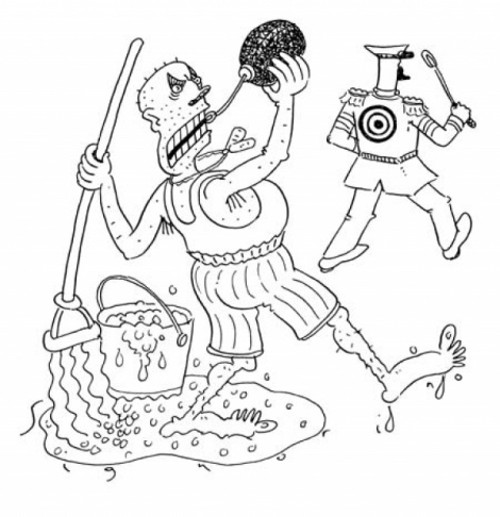I can, but frankly not much—and in my opinion, that’s a story all by itself.
Fragging—assaulting a superior officer using a fragmentation grenade or other explosive—was surprisingly common during the Vietnam War. The most reliable figure is 730 suspected incidents from 1969 through 1971, much higher than in U.S. wars before or since. Oddly, there’s no official count of fragging deaths; one unofficial source says 86, another 45.
Prior to Vietnam, assaults against U.S. military officers were rare. World War I saw one incident leading to court martial per 12,700 servicemen, a ratio said to have remained fairly steady during World War II and the Korean War. During the Vietnam conflict, the fragging rate rose from 1 incident per 3,300 servicemen in 1969 to a peak of 1 per 572 servicemen in 1971.
Few Vietnam fragging cases went to trial, so comparison with earlier wars is risky. Still, these are astonishing statistics, suggesting an army at the point of degenerating into a mutinous rabble. You’d think in the wake of Vietnam the U.S. military would have closely investigated fragging to avoid another brush with chaos. As far as I can tell, it didn’t. I had my assistant Una scour the databases and contact the U.S. Army Center of Military History and the Combat Studies Institute. Even with the help of these sources, she was able to turn up only a few short papers on fragging. Sure, maybe the Pentagon has some classified research it isn’t telling anybody about. But here’s pretty much all that’s publicly known:
Two articles on fragging, “Assaults with Explosive Devices on Superiors” by David Gillooly and Thomas Bond (Military Medicine, 1976) and Bond’s “The Why of Fragging” (American Journal of Psychiatry, 1976), were based on analysis of 28 convicted fraggers. These articles are the most detailed research on fragging we have. However, each is just three pages long.
The Center of Military History sent us an unsigned two-page report entitled “Murder of U.S. Army Company Grade Officers in Vietnam by Enlisted Men,” apparently written in response to claims that 40 percent of captains and lieutenants killed in Vietnam were murdered by their men. Not likely, says the report. About 3,000 such officers died during the war; 40 percent of that number is about 1,200; no way would slaughter on that scale have escaped official notice.The tally of 730 fragging incidents comes from Guenter Lewy’s 1978 book, America in Vietnam, which cites 1971 army testimony before Congress: 126 incidents in 1969, 271 in 1970, and 333 in 1971 (presumably as of the date of testimony). It’s unlikely fragging suddenly ceased in 1972, so 730 is probably low.
Why did fraggers do it? Journalist Eugene Linden, writing in Saturday Review in 1972 (“The Demoralization of an Army: Fragging and Other Withdrawal Symptoms”) blamed the “futility and senselessness of the war.” A more persuasive story emerges when you look at the Bond-Gillooly data points: 1. 80 percent of the murders happened at base camps, not in the field; 2. 90 percent of the assaults took place within three days after an argument with the victim; 3. offenders typically felt they had been unfairly treated; 4. 88 percent of attackers were drunk or high when they did it; 5. on average, they had been in Vietnam for six months; 6. 26 of the 28 were volunteers, not draftees; 7. only five had graduated from high school; and 8. many were loners or had psychological problems.
In short, for all the tales of soldiers assaulting gung-ho officers they feared would get them killed, a more likely explanation is that fragging was the work of rear-echelon misfits with anger management and substance issues who sulked after getting chewed out and decided to have their revenge. The nature of the war as such likely contributed only indirectly—its unpopularity discouraged enlistment and compelled the military to accept more trouble-prone recruits. The prevalence of drugs couldn’t have helped either—one study of soldiers returning from Vietnam found one-fifth had been addicted to narcotics.
But that’s just my guess. Bond and Gillooly concede they didn’t have much information to work with, and evidently little other research was done. Perhaps it doesn’t matter; as of 2008, only two fragging cases had gone to court martial since the beginning of the war in Iraq. In a New York Times article about one of them, unnamed experts attribute the improved record to increased professionalism stemming from establishment of an all-volunteer army in 1973. Maybe, but most fraggers in Vietnam were volunteers, too. The truth is, we don’t really know.
Comments, questions? Take it up with Cecil on the Straight Dope Message Board, StraightDope.com, or write him at the Chicago Reader, 11 E. Illinois, Chicago 60611.
Speaking of...
-
The Pipeline: Fighting Nazis, Yet Again, In Day Of Infamy
Looking over another WWII first-person shooter currently on Steam.
- Nov 29, 2016
-
Honored Silence: Gay soldiers on Veterans Day
- Nov 11, 2010
-
Drive-By Truckers
Cooley for President: The Truckers’ guitarist is more than just a sideman.
- May 5, 2010
- More »
More by Cecil Adams
-
This Is the End, My Friend
This week's Straight Dope marks the last appearance of the column as the Teeming Millions have known it for the past 45 years.
- Jul 11, 2018
-
Do Brain Supplements Do Anything?
Brain Drain
- Jul 4, 2018
-
Is flying really worse for the environment than driving?
Planes and Trains
- Jun 27, 2018
- More »




